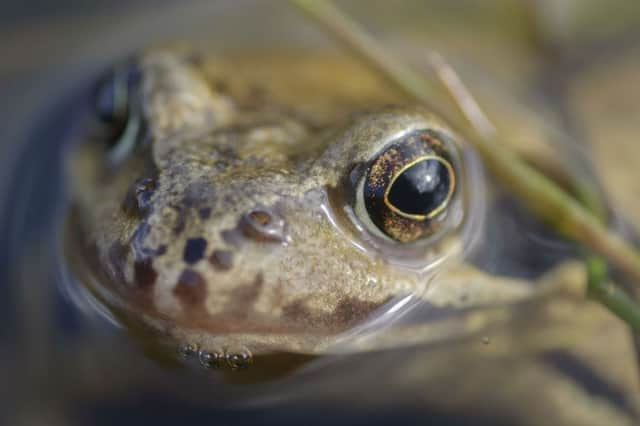Year with a sting in the tail for wasps and frogs


An annual review of the year’s weather and wildlife from the National Trust has revealed a mixed picture for the nation’s plants and animals in 2015, from a superb apple crop to a difficiult year for breeding frogs and toads hit by dry conditions in spring.
But the Trust, which looks after almost 250,000 hectares (620,000 acres) of land across England, Wales and Northern Ireland, warned there was also a huge challenge in reversing long term declines of around 60 per cent for the nation’s wildlife.
Advertisement
Hide AdAdvertisement
Hide AdThe year began in stark contrast to 2014’s stormy start with the sunniest winter on record, but spring was late and summer migrant birds were held up by northerly winds.
April was the sunniest in records dating back to 1929 but spring deteriorated in May as the jet stream shifted south, leading to a wet and windy month followed by a generally wet and very windy summer.
The summer saw huge swarms of barrel jellyfish, particularly around the south west of England and Wales, which experts say may be due to overfishing and warming seas, leading to huge plankton blooms and fewer predators.
An “incredible number” of dolphins, porpoises and sharks have been seen this year, Matthew Oates, nature and wildlife specialist, said.
Advertisement
Hide AdAdvertisement
Hide AdBut it was another bad year for wasps, particularly in the South West, with two species of common wasp very scarce in many areas for the second year in the row, and fears it indicates wider declines in insects.
While some people may welcome dwindling numbers of wasps, the ecological world was “delicate” and the low numbers should raise questions about the impacts it was having, Mr Oates said.
Some coastal birds, including little terns at Norfolk’s Blakeney Point and guillemots on the Farne Islands, had great breeding years, but puffins have been placed on a “red list” of threatened birds.
The long-tailed blue butterfly, a very rare migrant, has returned to the South East of England, breeding again on the White Cliffs of Dover, but the are fears for the UK’s ladybirds, with some BBC Springwatch Facebook fans seeing none this year, the Trust said.
Advertisement
Hide AdAdvertisement
Hide AdMr Oates said: “Every year our wildlife has to deal with our weather’s highs and lows, and this year was certainly no different. “This summary illustrates how our wildlife has fared over the last year, but long-term trends show the enormous challenges we face to reverse the worrying rate of decline.”
He added: “What’s clear is that our native wildlife has enough problems coping with the stresses of our ever changing climate without also having to cope with habitat loss as a result of our increasing demands on the environment.”
It was a good year for:
Barn owls around National Trust’s Malham Tarn and in Upper Wharfedale in the Yorkshire Dales, as a result of reduced grazing pressure and planting of young woodland led to good numbers of their favoured prey, the field vole.
Huge swarms of barrel jellyfish, particularly around the south west of England and Wales.
Advertisement
Hide AdAdvertisement
Hide AdA lack of stormy weather or frosts in early autumn led to a great year for autumn colour, while there was also a “superb” apple crop.
Little terns had their most productive year at Blakeney Point, Norfolk, since 2011.